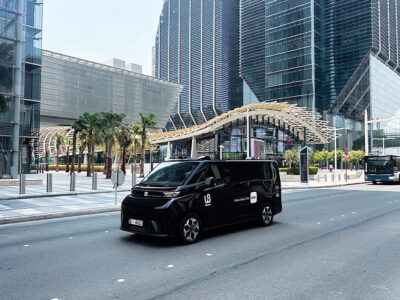When you walk into a luxury flagship or the latest pop-up in Dubai or Riyadh, you expect to have a polished experience: an elegant welcome, personalised attention, and a smooth interaction. Too often, behind these curated moments, brands still operate with a fractured view of customer experience. In a region where expectations are rising fast and digital behaviours are evolving daily, luxury brands can no longer afford to treat customer experience (CX) as a standalone function. It has to become a foundation that shapes every decision.
Luxury consumers in the GCC are among the most sophisticated in the world. They travel frequently, shop across continents, and benchmark their experiences globally. A client browsing in Abu Dhabi expects the same level of experience they find in Paris or Milan, if not more. And they compare not only across geographies but also industries: the ease of booking a fine dining reservation is the standard against which they measure buying a bespoke piece of jewelry. They expect this consistency across channels, online and offline, and are quick to notice when a brand’s storytelling doesn’t match its service delivery.
This is where many brands stumble. They design exceptional store experiences but follow them with a clunky return process. They launch immersive online campaigns but rely on static websites that undermine the message. Customers don’t experience brands in silos; they experience one journey. When the journey feels disjointed, it signals something deeper: that the brand is not truly customer-centric.
Despite growing awareness, many luxury houses are still trapped in traditional models. They collect vast amounts of customer data but struggle to extract actionable insights. They create CX teams but lack a shared framework for acting together, across functions. They announce bold experience visions at the C-suite level, but without embedding CX into how teams are trained, resourced, and incentivised, the gap between ambition and reality persists.
This disconnect is not only operational; it is cultural. Brands that excel at CX are those where every team, from logistics to marketing to customer service, sees itself as part of the customer journey. They live by a simple principle: if you are not directly serving the customer, you are enabling someone who is. They align around a shared definition of what “great” looks like, and they use metrics not as mere “scores” but as a compass for decision-making. That integration is what turns fragmented touchpoints into cohesive, memorable experiences.
Closing this gap requires more than quick fixes. It calls for an integrated approach. That means redefining what CX actually means inside the organisation, not as a department or title, but as a mindset. This redefinition goes beyond simply adapting global templates. It requires creating experiences that are locally relevant while remaining globally consistent. In the Gulf, that might mean curating exclusive collections, hosting culturally meaningful events, or fine-tuning services to reflect local expectations without diluting the brand’s DNA. When customer experience becomes the lens through which leadership sets priorities, operations make trade-offs, and teams are rewarded, the entire journey improves.

This shift can take many forms. Brands can start by embedding CX metrics alongside financial and operational indicators so that experience is actively measured with the same rigor as sales or profitability. They can equip frontline teams with timely, actionable customer insights through an integrated Voice of the Customer program, empowering them to anticipate needs rather than simply react to issues. They can also conduct ecosystem-wide assessments to uncover not only what customers see but also what they do not: outdated selling ceremonies, fragmented CRM systems, and unclear ownership of key touchpoints. Addressing these often-overlooked frictions builds the consistency and trust that ultimately drive growth.
The payoff is significant. In highly connected markets like the GCC, where word-of-mouth travels fast, a truly differentiated experience can amplify brand advocacy far more effectively than traditional marketing spend. Conversely, a poor experience quietly drives attrition that no loyalty campaign can repair. In luxury, where the emotional stakes are high and every interaction reinforces or undermines brand equity, the margin for error is small.
Crucially, embedding CX does not mean starting from scratch. It is about elevating what already makes a brand distinctive and amplifying it consistently across every interaction. It is not about adding another transactional initiative to keep customers engaged. It is about rethinking how the organisation listens, learns, and acts, day after day.
In the years ahead, the brands that win in the Middle East will not be those with the loudest campaigns, but those that put the customer at the heart of every decision. They will be the ones that stop treating CX as a support function and start using it as a strategic engine. That shift will not happen overnight. But it begins with a simple question every brand should ask itself today: Are we organised around the customer, or just around ourselves?









